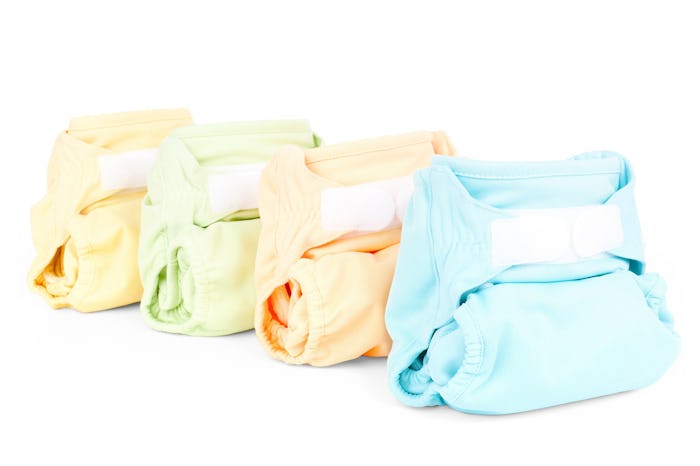Life
How To Transition From Disposable Diapers To Cloth Diapers, According To An Expert
Once you become a parent, you realize the immense amount of resources you go through with a baby, especially when it comes to disposable diapers. They can end up costing you a pretty penny and they aren’t exactly Earth-friendly. If you're looking at alternatives for both your wallet's and the planet's sake, you may want to know how to transition from disposable diapers to cloth diapers.
It sounds like a simple switch, but you should expect a shift to your normal routine. According to What To Expect, while cloth diapers are more eco-friendly, cost effective, and skin friendly, they can also be a little messier than disposables and require more upkeep, like frequent washing. So before you transition, be prepared for the changes to your diapering schedule and practices.
If you’re worried about the switch, it’s completely understandable. Romper spoke with Jessica Zablan, owner of The Birth & Baby Company, who says that transitioning from disposable diapers to cloth diapers can be scary and overwhelming when you realize how many different options there are. She suggests you do a little YouTube research to find which ones to choose. “You can watch videos on what they are, what they look like, how they work and what you need for them."
Because not all cloth diapers are equal, Zablan recommends getting a few different styles, because as your baby grows, their fit might change. “I loved prefolds and covers in the early stages,” says Zablan, “then went on to the All In Ones, then to All In Two systems, which we used until potty training.”
Once you get your cloth diapers, you’ll need to pre-wash them, and then obviously wash them when they get dirty. Zablan explains that it’s important to know if you have soft or hard water coming to your home, so that when you wash the cloth diapers, you can use the appropriate soap to clean them. “Coming up with a wash routine can be trial and error,” she says, “but the most common wash routine is to cold rinse without soap, then hot wash with soap, rinse with warm water, and then dry.”
Another thing you may be concerned about when switching to cloth diapers is rashes or skin reactions. According to Thinking About Cloth Diapers, sometimes babies can get rashes from cloth diapers due to the type of detergent you are using (chemicals and fragrances could cause a reaction) or if you haven't been washing them properly. The website also explained that because cloth diapers need to be changed more frequently, infrequent diaper changes could lead to a rash, too. You'll need to make sure to find a gentle detergent and follow the proper wash routine to avoid skin irritation.
Zablan also suggests looking for local Facebook groups that can help you understand your water type, and local cloth diaper stores that will give you the chance to check out the diapers in person. Transitioning to cloth diapers may seem like a lot, but the benefits they will bring to your wallet and the Earth are considerable, too. It just takes a little bit of prep work and a little scheduling to make it work for you and your family.
